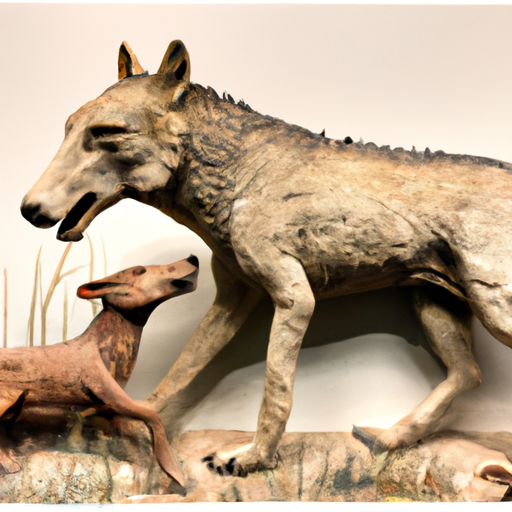A Brief History of Canine Companionship
Ever wondered who domesticated dogs? You are not alone. This age-old question has intrigued scientists, historians, and dog lovers alike for centuries. The story of dogs’ domestication is a tale of survival, companionship, and the deep bond between humans and their four-legged friends.
It’s generally accepted that dogs were the first animals to be domesticated. Their transition from wild beasts to household pets happened around 20,000 to 40,000 years ago, but the specifics of who exactly tamed these animals remain shrouded in mystery.
Theories on Dog Domestication
Several theories have been proposed to explain how dogs became man’s best friend. Here are some of the most popular ones:
- The Hunting Theory: This theory suggests early humans tamed and bred wolves to help with hunting. The wolves got food and protection, while humans got an early warning system and a hunting partner.
- The Scavenger Theory: This theory posits that wolves started following human camps to scavenge for leftovers. Over time, the less aggressive wolves were tolerated by humans and eventually domesticated.
The Role of Genetics in Dog Domestication
While theories about who domesticated dogs are fascinating, modern science has uncovered some genetic clues that might help solve this mystery. Research has shown that the domestication of dogs led to significant changes in their DNA compared to their wolf ancestors.
| Trait | Wolf | Domestic Dog |
|---|---|---|
| Size | Larger | Smaller |
| Lifespan | Shorter | Longer |
| Behavior | Aggressive | Tame |
These genetic changes suggest that dog domestication could have been a complex, multi-generational process, involving both natural selection and human intervention.
The Cultural Significance of Dog Domestication
The domestication of dogs wasn’t just a practical matter; it had profound cultural implications. Dogs were not only used for hunting and protection, but they were also deeply integrated into human societies. They became symbols of loyalty and faithfulness, and their images were often used in religious and mythological contexts.
Dogs Today: From Wolves to Woofs
Today, dogs are not just pets; they’re part of our families. They’re therapy animals, service dogs, and even social media stars. The deep bond that exists between humans and dogs is a testament to the thousands of years of companionship that started with an act of domestication by our ancestors.
FAQ
Q: Who were the first people to domesticate dogs?
A: It remains unclear, but it’s believed that hunter-gatherer societies were the first to domesticate dogs.
Q: When did the domestication of dogs occur?
A: The domestication of dogs likely happened between 20,000 to 40,000 years ago.
Q: How did the domestication of dogs influence their behavior?
A: Domestication led to dogs becoming more docile, friendly, and cooperative with humans.
Q: What’s the difference between a domestic dog and a wild wolf?
A: Domestic dogs are generally smaller, live longer, and are less aggressive than their wolf ancestors.



